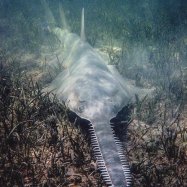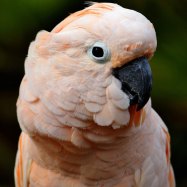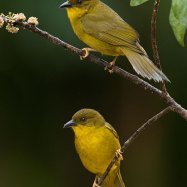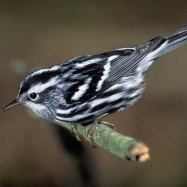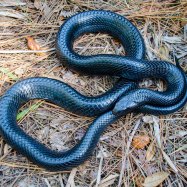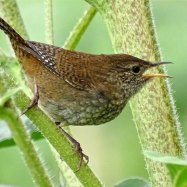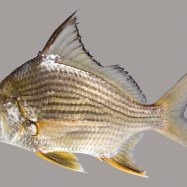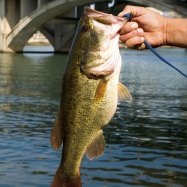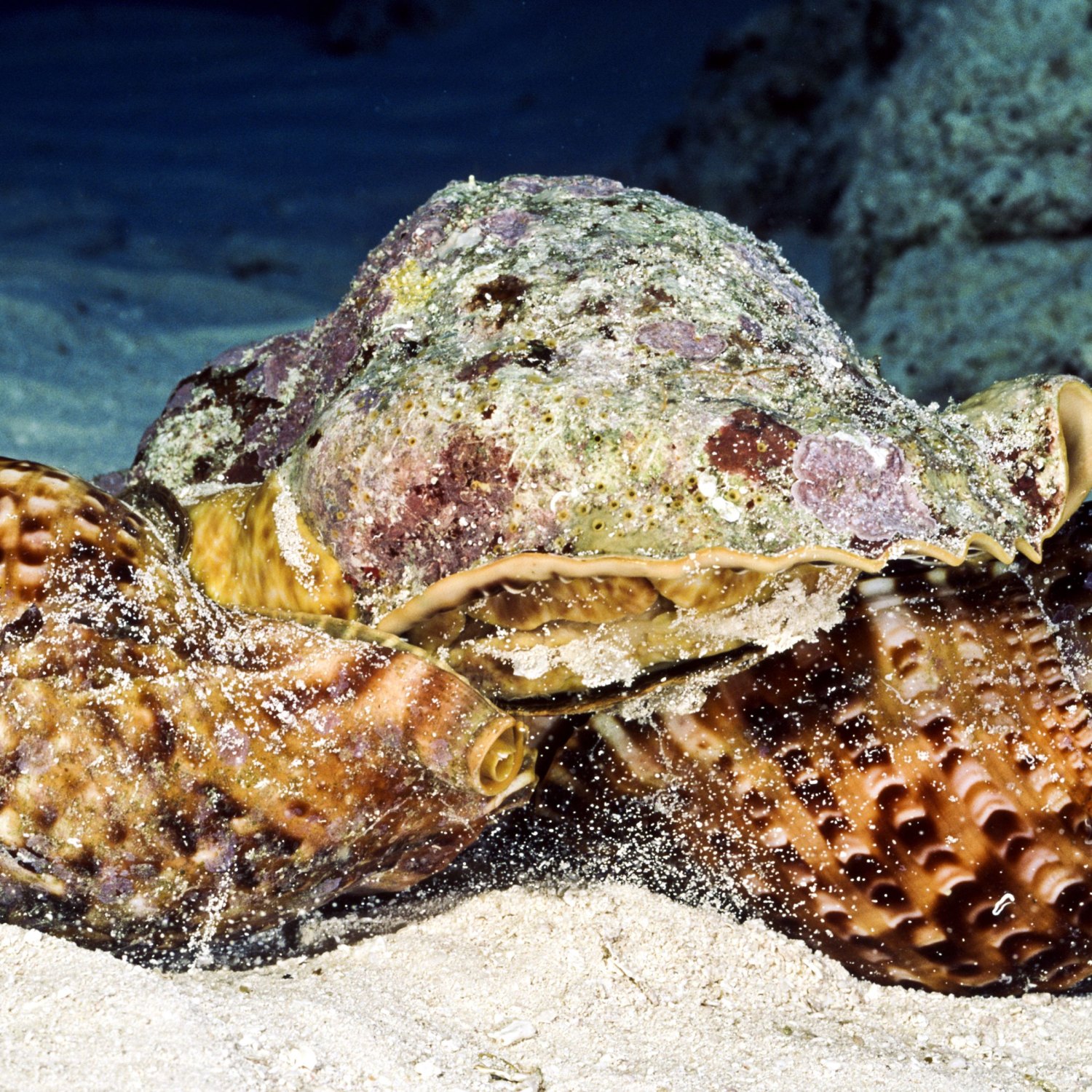
Mollusk
Varies depending on species
Mollusks are fascinating creatures found in various locations around the world. With a wide range of species and body shapes, these animals are truly unique. From snails to octopuses, Mollusks come in all sizes and belong to different families. Discover the diverse world of Mollusks today! #Mollusk #Animals #Wildlife
Animal Details Summary:
Common Name: Mollusk
Kingdom: Animalia
Habitat: Marine, freshwater, and terrestrial
Mollusks: The Fascinating Creatures of the Sea
The ocean is a vast and mysterious place that is home to a myriad of creatures, each with its own unique characteristics and adaptations. At the bottom of the ocean lies a group of animals that have long captured the imagination of humans - the mollusks. These creatures are found in all corners of the world, from the deep sea to the shallow shorelines, and have adapted to various environments, making them one of the most diverse groups of animals on the planet.Mollusks, also known as molluscs, are part of the phylum Mollusca, classified under the kingdom Animalia Mollusk. They are a diverse group, with over 85,000 known species, and are divided into five different classes: Gastropoda, Cephalopoda, Bivalvia, Polyplacophora, and Scaphopoda. Each class has its unique characteristics, offering a wide range of diversity within the phylum.
Let's take a deeper dive into the world of mollusks to learn more about these fascinating creatures.
Evolution and Classification of Mollusks
Mollusks are one of the oldest animal groups on Earth, with fossils dating back over 500 million years. They are believed to have evolved from a group of primitive organisms called the "protostomes," which also gave rise to other groups of animals such as annelids and arthropods.The phylum Mollusca is divided into several classes, each with its own defining characteristics. The classes of mollusks are Gastropoda, Cephalopoda, Bivalvia, Polyplacophora, and Scaphopoda, representing the vast diversity of shapes, sizes, and habits that these creatures possess.
Let's take a closer look at each of these classes and the unique features that make them stand out.
Gastropoda: The Largest Class of Mollusks
The class Gastropoda holds the largest number of species within the phylum Mollusca, with over 60,000 known species Mayan Cichlid. It includes familiar creatures such as snails, slugs, and sea slugs. The name Gastropoda comes from the Greek words "gastros," meaning stomach, and "pous," meaning foot, as most gastropods have a single muscular foot that they use to move around.What sets gastropods apart from other mollusks is their spiral shell, which they use for protection and to regulate their buoyancy. The shell is made of calcium carbonate and is usually coiled in a spiral shape, although some species have a shell that is flat or cone-shaped.
Aside from their unique shells, gastropods also have a diverse range of feeding methods. Some are filter feeders, using their specialized gills to filter food particles from the water. Others are herbivorous, feeding on plants and algae, while some are carnivorous, preying on small crustaceans or other mollusks.
One unique gastropod that stands out is the cone snail. These marine snails have venomous harpoons that they use to hunt their prey, making them one of the few venomous mollusks. They are also known for their strikingly beautiful and intricately patterned shells, which are highly sought after by collectors.
Cephalopoda: The Masters of Camouflage
Cephalopods are a class of mollusks that are known for their intelligence and remarkable ability to change color and texture to blend in with their surroundings. The name Cephalopoda comes from the Greek words "kephalos," meaning head, and "pous," meaning foot, as they have a distinct head and well-developed sensory organs.This class includes some of the most iconic invertebrates in the marine world, such as octopuses, squid, and cuttlefish. They are highly adaptive creatures, with eight or ten tentacles surrounding their mouths, making them efficient predators.
Cephalopods have a well-developed brain and complex nervous system, allowing them to solve problems, learn, and even communicate with each other. They also have highly advanced eyes that can see in color, unlike many other mollusks.
One of the most fascinating abilities of cephalopods is their ability to change their skin color and texture at will. They achieve this through specialized cells called chromatophores, which expand or contract to produce a variety of colors and patterns. This amazing adaptation helps them stay hidden from predators and blend in with their surroundings.
Bivalvia: The Filter Feeders
Bivalves, also known as pelecypods, are a class of mollusks characterized by their two-part hinged shell, which they use to protect themselves. This class includes clams, mussels, and oysters, and they are found in both marine and freshwater environments.Bivalves are filter feeders, using their gills to extract food particles from the water. They are essential for maintaining the health of aquatic ecosystems, as they help purify the water. Additionally, bivalves are also an important source of food for humans, with many species being considered delicacies in many parts of the world.
One of the most well-known bivalves is the pearl oyster, which produces the beautiful and precious gems known as pearls. Pearls are formed when a foreign object, such as a grain of sand, enters the oyster's shell and irritates its soft inner tissues. The oyster then coats the object with layers of nacre, a lustrous substance secreted by its mantle, which forms the pearl.
Polyplacophora: The Armored Mollusks
Polyplacophora, also known as chitons, are a class of mollusks characterized by their oval-shaped bodies and eight overlapping plates that cover their back. These "armor plates" not only protect them from predators but also help them cling to rocks and other hard surfaces in their marine habitats.Unlike other classes of mollusks, polyplacophora moves slowly, using their muscular foot to inch along the seafloor. They also possess a unique rasping tongue, called a radula, which they use to scrap off algae and other food sources from rocks.
Although they may not be as well-known compared to other classes of mollusks, polyplacophora play a vital role in marine ecosystems by controlling algae growth and providing food for other marine animals.
Scaphopoda: The "Tusk Shells"
Scaphopoda, also known as tusk shells, are a class of mollusks that have a slender, cylindrical shell with an open end and a tapered, pointed end. They live buried in sandy or muddy seabeds, with only the open end of their shell exposed.These curious creatures are filter feeders, sucking in water and extracting tiny food particles through their specialized gills. They also have a rudimentary foot that they use to anchor themselves to the sediment and to burrow deeper into the seabed.
One of the unique features of scaphopods is their tooth-like shells, which bear a resemblance to elephant tusks, hence the name "tusk shells." These shells have been used for centuries by Indigenous peoples to make tools, jewelry, and decorative items.
The Wonders of Mollusk Adaptations
One of the most intriguing aspects of mollusks is their incredible ability to adapt to different environments. From the deep, dark sea to the sandy shores, mollusks have managed to thrive and survive in various habitats, thanks to their unique adaptations.Adaptations for Life in the Sea
Many mollusks, especially those in the class Cephalopoda, have evolved various adaptations to live in the ocean. One of the most impressive is their highly developed nervous system, allowing them to hunt for prey, problem-solve, and communicate with each other.Another key adaptation is their intricate and elaborate camouflage. Mollusks use their unique color-changing abilities, cryptic patterns, and textures to blend in with their surroundings, allowing them to avoid predators and ambush their prey.
Some marine mollusks, such as the nautilus, have also evolved to live in the deep sea, where they have to withstand extreme pressure and lack of light. They have developed thick, calcified shells and strong muscles to help them survive in this harsh environment.
Adaptations for Life on Land
While most mollusks live in the ocean, there are some that have adapted to live on land. One of the most well-known is the snail, which has a unique respiratory system that enables them to breathe air. They also have a hard, protective shell that they can retract into when threatened.Another fascinating adaptation of land-dwelling mollusks is their ability to produce slime. Snails and slugs secrete a mucus-like slime, which they use to move around, protect their delicate bodies, and preserve moisture on their skin.
The Diverse Colors and Shapes of Mollusks
Mollusks come in a multitude of colors and shapes, with over 85,000 species having their own unique characteristics. From snails with spiraled shells to cuttlefish with their vibrant color-changing abilities, mollusks are truly fascinating creatures.The coloration of mollusks varies greatly depending on the species. Some have bright and bold colors, while others have more muted tones. Some are even capable of producing their own luminescent lights, such as the flashlight fish, which has bioluminescent bacteria in its eye sockets.
Similarly, the shapes of mollusks vary greatly based on their habitats and adaptations. Some have long and slender bodies, while others have compact and rounded shapes. Their shells, in particular, can come in a range of sizes and patterns, from the intricate and detailed cones to the simple and smooth clam shells.
The Global Distribution of Mollusks
Mollusks are found all over the world, in both marine and terrestrial environments. They are one of the most widespread animal groups, inhabiting a wide range of habitats, from the warm waters of the tropics to the cold depths of the poles.The exact number of mollusk species is unknown, as new species are constantly being discovered and described. However, it is estimated that their global distribution covers around 200 different countries.
In marine environments, mollusks can be found in all oceans and seas, from the shallow shorelines to the deepest depths. They also inhabit freshwater ecosystems, including rivers, lakes, and ponds, and can even be found in terrestrial habitats such as forests, fields, and mountains.
The Importance of Mollusks in the Ecosystem
Mollusks play a crucial role in maintaining the balance and health of various ecosystems. As filter feeders, they help purify the water, keeping it free from toxic substances and preventing algal blooms. They also serve as a vital food source for many marine animals, including whales, fish, and birds.Additionally, some mollusks, such as oysters and mussels, also provide important ecosystem services by creating habitats for other species. Their shells, which are made of calcium carbonate, help to buffer the ocean's acidity, protecting marine life from the harmful effects of ocean acidification.
Furthermore, mollusks are also an essential economic resource, particularly bivalves such as mussels, clams, and scallops, supporting industries such as aquaculture and providing livelihoods for many communities around the world.
Threats to Mollusk Populations
Despite their importance in the ecosystem and their economic value, mollusk populations are facing threats from various sources. One of the main threats to these creatures is human activities, such as overfishing, pollution, and habitat destruction. Many species of mollusks are also unintentionally caught as bycatch, leading to further declines in their populations.Climate change is also a significant threat to mollusks, with rising ocean temperatures and ocean acidification impacting their development, behavior, and survival. As filter feeders, they are also at risk of ingesting microplastics, causing harm to their digestive systems and overall health.
It is essential to raise awareness about these issues and to work towards sustainable practices that protect mollusk populations and their habitats for future generations.
Conclusion
Mollusks are truly fascinating creatures that have adapted to thrive in various environments, from the depths of the ocean to the land. With their diverse colors, shapes, and adaptations, they are a testament to the vast diversity of life on our planet.However, as with many other species, they are facing threats from human activities and a changing climate. It is crucial that we continue to learn about and appreciate these animals while also taking steps towards conservation and sustainable practices to ensure their survival. Let's work together to protect these amazing creatures and the important roles they play in our ecosystems.

Mollusk
Animal Details Mollusk - Scientific Name: Mollusk
- Category: Animals M
- Scientific Name: Mollusk
- Common Name: Mollusk
- Kingdom: Animalia
- Phylum: Mollusca
- Class: Gastropoda, Cephalopoda, Bivalvia, Polyplacophora, Scaphopoda
- Order: Various
- Family: Various
- Habitat: Marine, freshwater, and terrestrial
- Feeding Method: Filter feeding, herbivorous, carnivorous
- Geographical Distribution: Global
- Country of Origin: N/A
- Location: Various
- Animal Coloration: Varies depending on species
- Body Shape: Varies depending on species
- Length: Varies depending on species
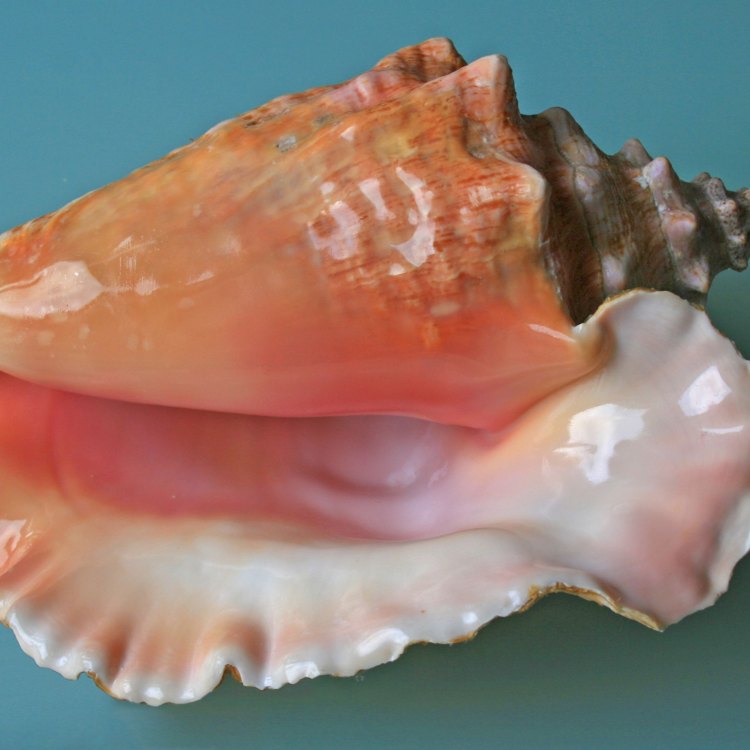
Mollusk
- Adult Size: Varies depending on species
- Average Lifespan: Varies depending on species
- Reproduction: Sexual reproduction
- Reproductive Behavior: Varies depending on species
- Sound or Call: Varies depending on species
- Migration Pattern: Varies depending on species
- Social Groups: Varies depending on species
- Behavior: Varies depending on species
- Threats: Habitat loss, pollution, overfishing
- Conservation Status: Varies depending on species
- Impact on Ecosystem: Important role as prey and predator, filter feeders
- Human Use: Food source, pearls, shells, biomedical research
- Distinctive Features: Soft body, external or internal shell
- Interesting Facts: Mollusks are incredibly diverse and include well-known animals such as snails, clams, octopuses, and squids.
- Predator: Varies depending on species
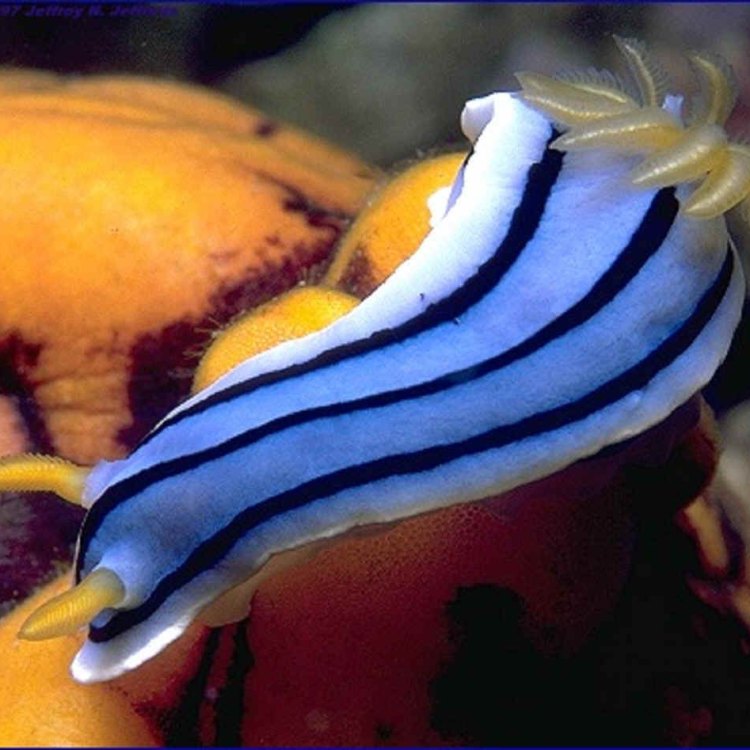
Mollusk
The Incredible World of Mollusks: Exploring the Surprising Diversity of These Soft-Bodied Creatures
When we think of animals, we often imagine furry mammals, scaly reptiles, or colorful birds. However, there's an entire world of creatures that often go overlooked - mollusks. From snails to squid, these soft-bodied animals are incredibly diverse and can be found in almost every corner of the oceans, lakes, and even on land. In fact, there are over 130,000 known species of mollusks, making them one of the most diverse and successful groups of animals on the planet PeaceOfAnimals.Com.But what exactly are mollusks, and what sets them apart from other animals? Let's dive into the world of these fascinating creatures and discover their unique features, behaviors, and importance in the ecosystem.
The Basics of Mollusks: Anatomy and Classification
Mollusks (Phylum Mollusca) are invertebrate animals, meaning they do not have a backbone or spinal column. They are characterized by their soft, unsegmented bodies and may or may not have a shell. The size of mollusks can vary greatly, with some species being microscopic and others reaching up to 60 feet in length, like the giant squid.Mollusks are typically divided into eight classes: Gastropoda (snails and slugs), Bivalvia (clams, oysters, and mussels), Cephalopoda (octopuses, squids, and cuttlefish), Monoplacophora (ancient deep-sea mollusks), Aplacophora (worm-like mollusks), Polyplacophora (chitons), Scaphopoda (tusk shells), and Amphineura (winged snails). Each class has its unique characteristics and evolutionary history, but all share similar features like a muscular foot used for movement and feeding, a mantle (layer of tissue) that secretes the shell, and a radula (toothed tongue) for feeding.
Reproduction and Behavior
Most mollusks reproduce sexually, with separate male and female individuals. However, some species, like snails, are hermaphrodites, meaning they have both male and female reproductive organs. The reproductive behavior of mollusks can vary depending on the species Mozambique Spitting Cobra. For example, some gastropods, like snails, lay eggs, while others, like sea slugs, develop their embryos inside their bodies and give birth to live young.Mollusks also have diverse behaviors, from slow-moving snails to fast-swimming squids. Some species, like octopuses, are known for their intelligence and can solve complex puzzles and navigate mazes. Others, like clams and mussels, stay sedentary and use their strong muscles to keep themselves attached to rocks or substrates.
Sound, Migration, and Social Groups
While some animals use vocalizations to communicate, such as birds or dolphins, most mollusks do not produce sounds. However, there are a few exceptions. The Caribbean queen conch, for example, can produce a low-pitched sound by vibrating its shell. This sound is used as a warning to potential predators.Mollusks also have varying migration patterns. Some species, such as the blue-ringed octopus, are highly migratory and can cover long distances in search of food or suitable breeding grounds. Others, like freshwater snails, stay in the same area for their entire lives.
Since mollusks have vast species diversity, social groups among them are also diverse. Some species like octopuses are solitary, while others like oysters form large colonies. Some mollusks, like the giant clams, have symbiotic relationships with algae, where they provide a habitat for the algae to live and photosynthesize, while the algae provide the clams with food.
Threats and Conservation Status
Unfortunately, many species of mollusks are facing severe threats due to various human activities. Habitat loss, pollution, and overfishing are the primary threats to these creatures. Mollusks that live in coral reefs, for example, are at risk due to ocean acidification and coral bleaching caused by climate change. Coastal development and pollution also impact mollusks that live near shorelines.Overfishing, particularly of species like clams, mussels, and oysters, is a significant threat to the survival of these animals. Many mollusks are also unintentionally caught in fishing gear, leading to their decline. The destruction of mangrove forests, one of the essential habitats for multiple mollusk species, is also a severe threat.
The conservation status of mollusks varies greatly depending on the species. Some, like the Hawaiian Tree Snail, are critically endangered due to habitat loss and predation by invasive species. On the other hand, some commercially exploited species like the Pacific oyster have relatively stable populations. It is crucial to pay attention to the conservation needs of these animals to ensure their survival and maintain the balance of the ecosystems they inhabit.
The Vital Role of Mollusks in the Ecosystem
While mollusks may not be the most well-known animals, they play a crucial role in the ecosystem. They act as both prey and predators, forming an essential link in the food chain. Many species of fish, birds, and mammals rely on mollusks as a food source, and their decline could have a ripple effect on the entire ecosystem.Mollusks are also vital filter feeders, which means they help keep the water clean and free of debris by filtering it through their bodies. Clams, mussels, and oysters, for instance, are highly efficient filter feeders and can filter large amounts of water in a single day. This process helps maintain the health and balance of aquatic habitats.
The shells produced by mollusks are also important for the ecosystem. When these animals die, their shells sink to the bottom of the ocean, creating habitats for other organisms to live in. They also help protect the shoreline from erosion and provide a natural barrier against strong waves and storms.
Human Use of Mollusks
Mollusks have been utilized by humans for thousands of years for a multitude of purposes. Perhaps the most well-known use of mollusks is as a food source. Many species, such as oysters and clams, are considered delicacies in various cultures and are a significant part of local cuisines.In addition to food, mollusks are also used for their shells. Pearls, which are formed inside the shells of some mollusks, have been prized throughout history for their beauty and value. The mother-of-pearl, found in the shells of certain mollusk species, is also used in jewelry and decorative items.
Mollusks also play a crucial role in biomedical research. Their unique immune systems and ability to regenerate lost body tissues have made them valuable subjects for studying human diseases and potential treatments.
Distinctive Features and Interesting Facts
What sets mollusks apart from other animals is their soft body, which is protected by either an external or internal shell. While most people may think of snails and oysters when they hear the word mollusk, these creatures are much more diverse. Octopuses, for instance, do not have shells but are still considered mollusks due to their shared evolutionary history.Mollusks are also incredibly diverse, with over 130,000 known species spread across the globe. Some species live in landscapes that may seem unimaginable, like deep sea vents or on the backs of crabs.
Despite their numerous differences, all mollusks have one thing in common - they are masterful survivors. They have adapted to thrive in various environments, from tropical waters to snow-covered mountains, and have been around for millions of years.
Predators of Mollusks
As with any animal, mollusks have their share of predators. These can range from small marine animals to large mammals. Some of the most common predators of mollusks include crabs, sea stars, and fish.In conclusion, mollusks may seem like simple creatures at first glance, but they are incredibly diverse and have many unique features and behaviors. As we continue to explore and discover the world's oceans, lakes, and lands, we will undoubtedly find even more fascinating facts about these soft-bodied animals. It's essential that we understand and protect these creatures to ensure their survival and maintain the balance of the ecosystems they inhabit. The world of mollusks may be hidden, but it's undoubtedly worth exploring.

Mollusks: The Fascinating Creatures of the Sea
Disclaimer: The content provided is for informational purposes only. We cannot guarantee the accuracy of the information on this page 100%. All information provided here may change without prior notice.

